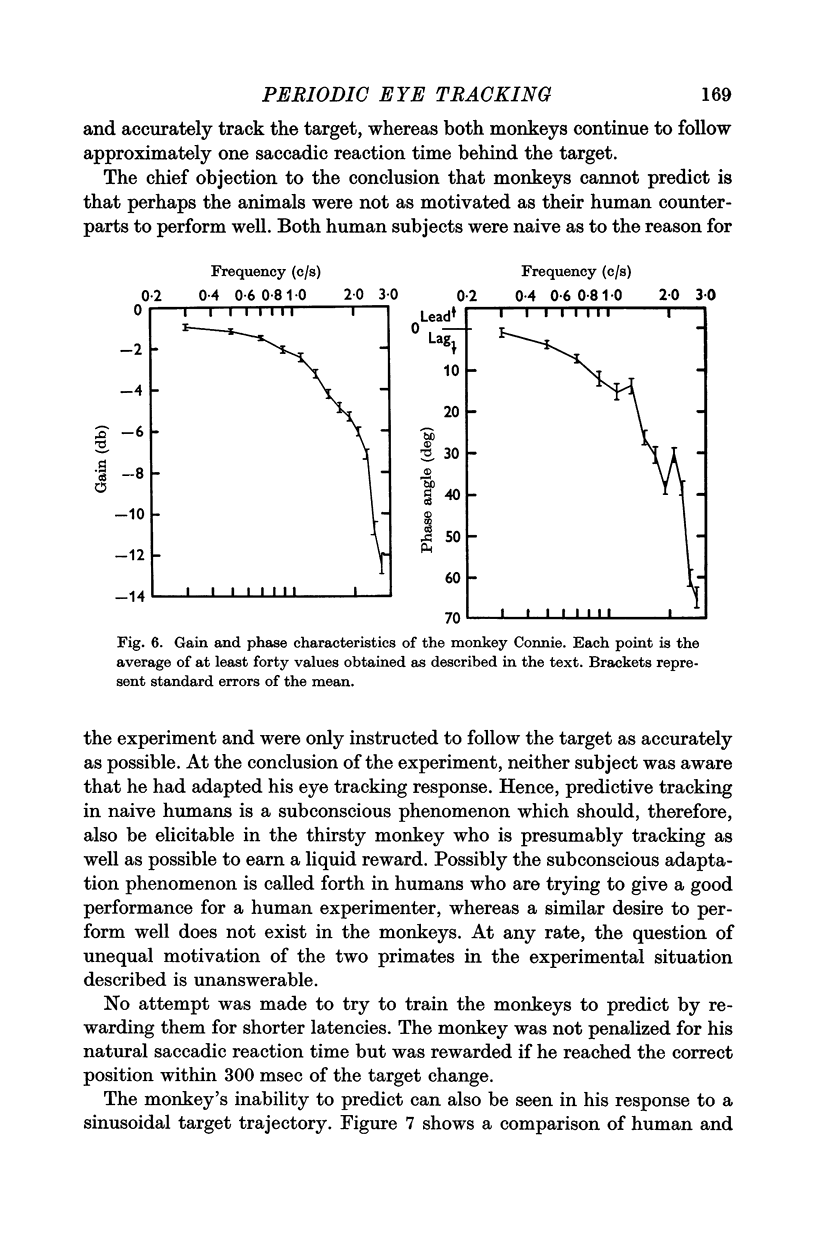Abstract
1. Eye movements were measured in monkeys trained for visual tracking.
2. In response to periodic square wave target movements, monkeys do not show a significant reduction in the latency of saccadic movements.
3. Under similar conditions, human beings subconsciously reduce their latency and after several cycles are in step with the target.
4. In response to sinusoidal targets, monkeys show a latency or phase lag which increases monotonically with frequency starting at 0·3 c/s. Human beings can remain in phase with the target at frequencies up to 1·0 c/s.
5. Hence, monkeys do not exhibit the human predictive tracking response.
Full text
PDF










Selected References
These references are in PubMed. This may not be the complete list of references from this article.
- Fuchs A. F., Robinson D. A. A method for measuring horizontal and vertical eye movement chronically in the monkey. J Appl Physiol. 1966 May;21(3):1068–1070. doi: 10.1152/jappl.1966.21.3.1068. [DOI] [PubMed] [Google Scholar]
- Fuchs A. F. Saccadic and smooth pursuit eye movements in the monkey. J Physiol. 1967 Aug;191(3):609–631. doi: 10.1113/jphysiol.1967.sp008271. [DOI] [PMC free article] [PubMed] [Google Scholar]
- ROBINSON D. A. A METHOD OF MEASURING EYE MOVEMENT USING A SCLERAL SEARCH COIL IN A MAGNETIC FIELD. IEEE Trans Biomed Eng. 1963 Oct;10:137–145. doi: 10.1109/tbmel.1963.4322822. [DOI] [PubMed] [Google Scholar]
- Robinson D. A. The mechanics of human smooth pursuit eye movement. J Physiol. 1965 Oct;180(3):569–591. doi: 10.1113/jphysiol.1965.sp007718. [DOI] [PMC free article] [PubMed] [Google Scholar]


